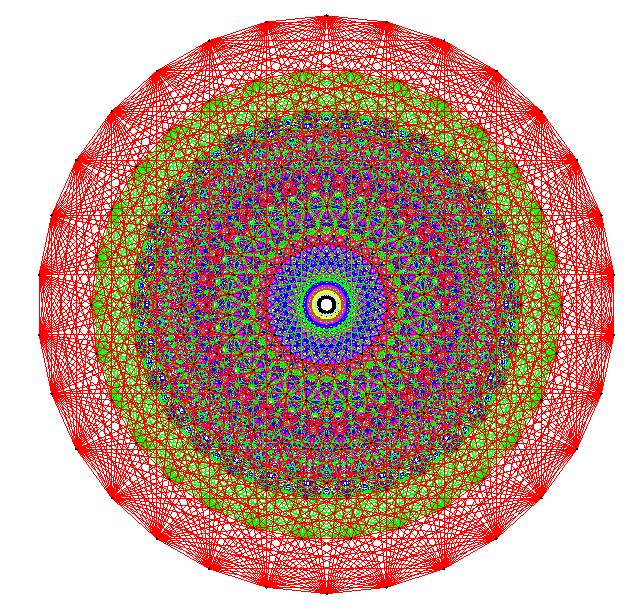

In what follows we work with the complex form of E8 and its Lie algebra e8. Choose a root system Δ for e8. Each root φ in Δ gives a root vector eφ in e8, and e8 is then a direct sum of its Cartan subalgebra h and the spans of these vectors eφ. The Cartan subalgebra is 8-dimensional, and there are 240 roots, so the dimension of e8 is 248.
Choose simple roots α1, ... α8. There is a special element w in h such that
for i = 1,...,8. This gives a 1-parameter subgroup exp(sw) in E8, where s ∈ C. An element of E8 is called principal if it is conjugate to one of the form exp(sw). There is a unique element of order 2 of the form exp(sw), so we get a distinguished conjugacy class of order-2 elements in E8, namely the principal ones. There's a copy of the group (Z/2)5 sitting inside this conjugacy class. The group (Z/2)5 has 32 characters, that is, homomorphisms
31 of these characters are nontrivial. Note that
The nontrivial characters χj (j = 1,...,31) have an interesting property. Let
Then hj is a Cartan subalgebra of e8! And,
So, the 248-dimensional Lie algebra e8 is a direct sum of 31 8-dimensional Cartan algebras.
E8 has a finite subgroup called the Dempwolf group, FDemp, with the above (Z/2)5 as a normal subgroup. In fact we have an exact sequence:
Starting from the above (Z/2)5 subgroup of E8, we get a chain of subgroups
The centralizer of Z/2 in E8 is D8 = Spin(16).
The centralizer of (Z/2)2 is D4 × D4, or more precisely, Spin(8) × Spin(8) mod the diagonal copy of Z/2.
We have a vector space decomposition
where V8, S8+ and S8- are the 8-dimensional "vector", "right-handed spinor" and "left-handed spinor" representations of Spin(8), respectively. These three representations are related by triality.
The elements of the Dempwolf group permute the 64-dimensional subspaces V8⊗V8, S8+⊗S8+ and S8-⊗S8- of e8.
Griess and Ryba have been studying finite subgroups of E8, for example:
Proving this was hard!
The group SL(2,32) has cardinality
corresponding to something analogous to an Iwasawa decomposition G = KAN: the subgroup K has cardinality 3 × 11, the subgroup A has cardinality 31, and the subgroup N (consisting of the upper triangular matrices shown above) has cardinality 32.
The solvable subgroup of SL(2,32) has one irreducible 31-dimensional representation. The adjoint action of SL(2,32) on e8 acts to permute its 31 Cartan subalgebras according to this representation!
There is an element of order 11 in SL(2,32) ⊂ E8. The centralizer of this element in E8 is a product of two copies of the Standard Model gauge group:
Let gi be the subspace of e8 consisting of linear combinations of root vectors eφ where the root φ is a sum of i simple roots. Let g-i be the analogous thing defined using the negatives of the simple roots. Then, the Lie algebra of the S(U(3)×U(2)) × S(U(3)×U(2)) subgroup of E8 is
(There is also an element of order 3 in SL(2,32), whose centralizer in E8 is SU(9).)
lines. The centralizer in E8 of any such line is the group
This group is 48-dimensional. It has a 248-dimensional representation coming from the adjoint action on e8. This is the direct sum of the 48-dimensional subrepresentation coming from su(5) ⊕ su(5) ⊂ e8 and a representation of dimension
This 200-dimensional representation is
where 5 is the defining representation of SU(5), 10 is its second exterior power, and 5* and 10* are the duals of these.
Is any of this useful in particle physics? In particular, what could the "doubling" mean?
(I thank Allen Knutson, Jacques Distler and Jan Saxl for correcting some errors in my lecture notes. There could be more, and they're all my fault.)